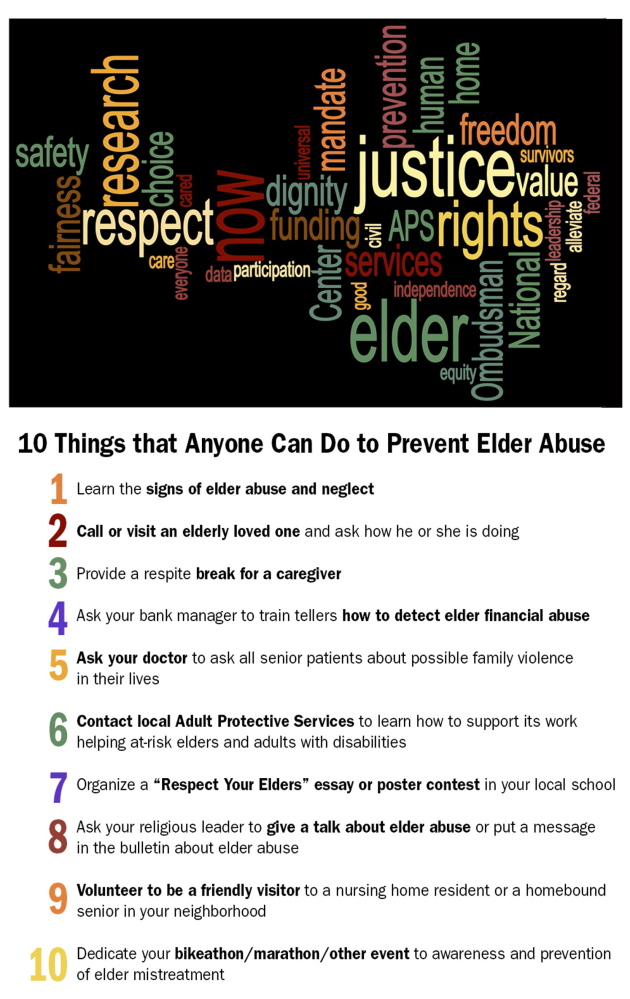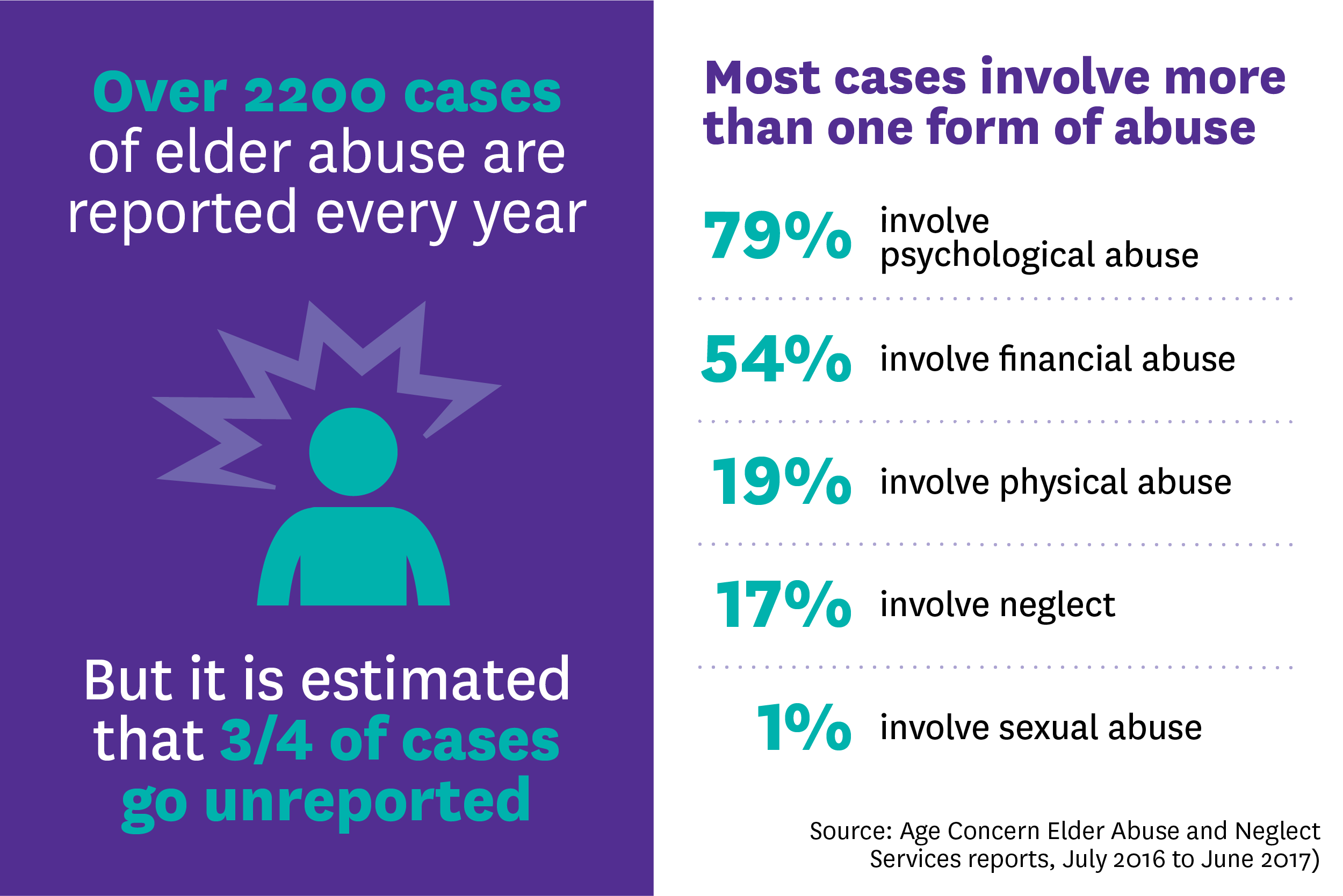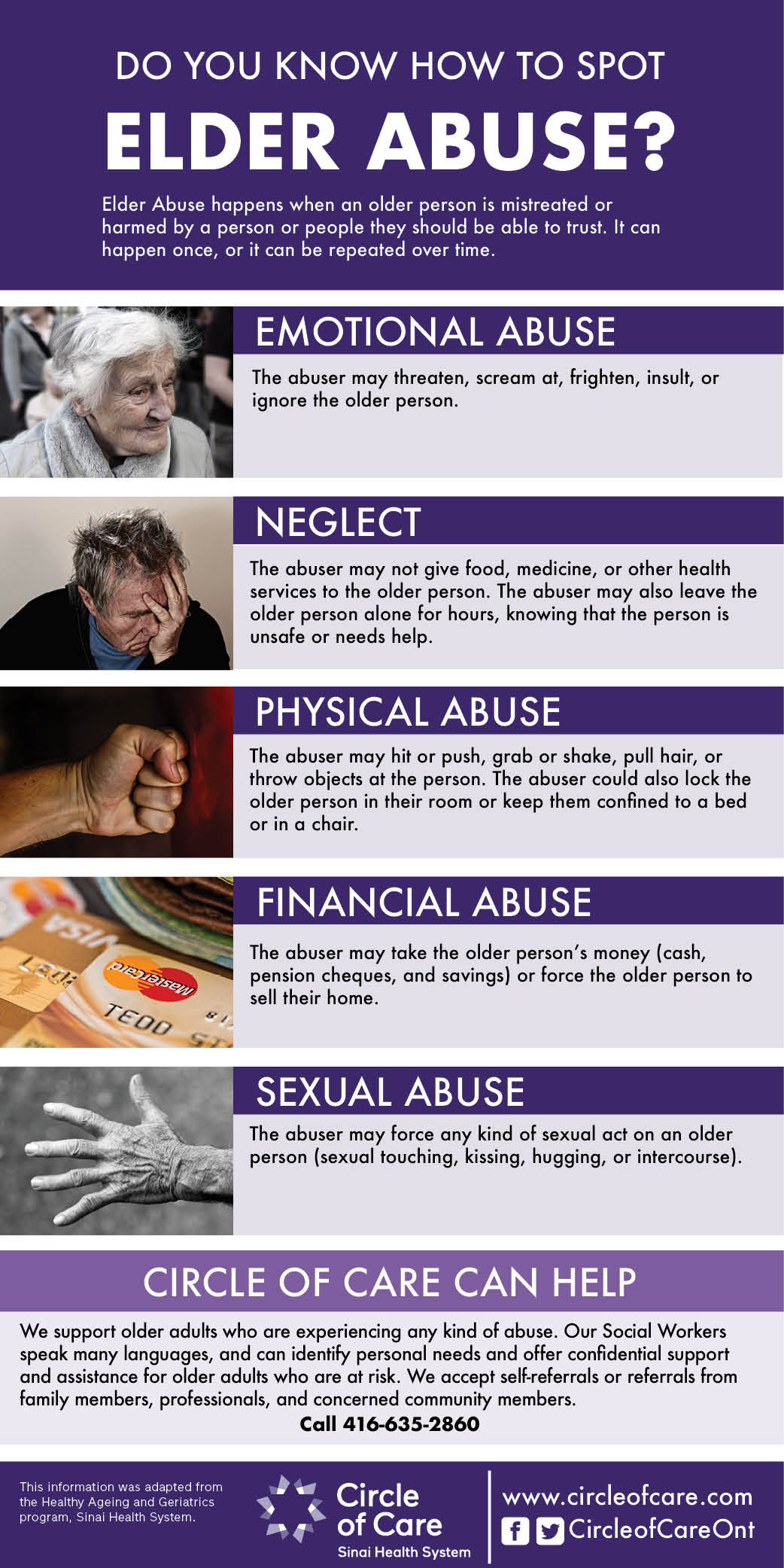What Is The Most Common Form Of Elder Abuse
What Is The Most Common Form Of Elder Abuse - Physical abuse is when an elder experiences illness, pain, injury, functional impairment, distress, or death as a result of the intentional use of physical force and includes acts such as hitting, kicking, pushing, slapping, and burning. Emotional abuse can include verbal harassment, berating, humiliation or intimidation. When a caregiver or other person uses enough force to cause unnecessary pain or injury, even if the reason is to help the older person, the behavior can be considered. Emotional abuse, sometimes called psychological abuse, can include a caregiver saying hurtful words, yelling,. Elder abuse is an intentional or negligent act by any person that causes harm or a serious risk of harm to an older adult. Web the most common are: Emotional abuse or psychological abuse occurs when someone yells at another person in a hurtful way, uses verbal threats, creates situations of fear or ignores another person within their care. Web common types of elder abuse include: Physical abuse happens when someone causes bodily harm by hitting, pushing, or slapping. Neglect occurs when the caregiver does not.
Perpetrators include children, other family members, and spouses—as well as staff at nursing homes, assisted living, and other facilities. Emotional abuse, sometimes called psychological abuse, can include a caregiver saying hurtful words, yelling,. Web the abuse of older people, also known as elder abuse, is a single or repeated act, or lack of appropriate action, occurring within any relationship where there is an expectation of trust, which causes harm or distress to an older person. Emotional abuse can include verbal harassment, berating, humiliation or intimidation. Many studies estimate that about 10% of all people over the age of 65 experience some form of abuse. Physical abuse, which can range from slapping or shoving to severe beatings and restraining with ropes or chains. Web elder abuse can take many different forms, including: Physical abuse is when an elder experiences illness, pain, injury, functional impairment, distress, or death as a result of the intentional use of physical force and includes acts such as hitting, kicking, pushing, slapping, and burning. It is a term used to describe five subtypes: Elder abuse is an intentional or negligent act by any person that causes harm or a serious risk of harm to an older adult.
Web there are many types of abuse: Elder abuse is an intentional or negligent act by any person that causes harm or a serious risk of harm to an older adult. Emotional abuse, sometimes called psychological abuse, can include a caregiver saying hurtful words, yelling,. Web the abuse of older people, also known as elder abuse, is a single or repeated act, or lack of appropriate action, occurring within any relationship where there is an expectation of trust, which causes harm or distress to an older person. Perpetrators include children, other family members, and spouses—as well as staff at nursing homes, assisted living, and other facilities. Physical abuse, which can range from slapping or shoving to severe beatings and restraining with ropes or chains. Emotional abuse or psychological abuse occurs when someone yells at another person in a hurtful way, uses verbal threats, creates situations of fear or ignores another person within their care. Physical abuse happens when someone causes bodily harm by hitting, pushing, or slapping. Web elder abuse can take many different forms, including: Physical abuse means inflicting physical pain or injury upon an older adult.
elder abuse
Web elder abuse can present in many forms, including physical abuse, psychological/emotional abuse, sexual abuse, financial abuse, and neglect. Emotional abuse, sometimes called psychological abuse, can include a caregiver saying hurtful words, yelling,. It is a term used to describe five subtypes: Physical abuse means inflicting physical pain or injury upon an older adult. Emotional abuse or psychological abuse occurs.
Financial exploitation one of most common forms of elder abuse
Perpetrators include children, other family members, and spouses—as well as staff at nursing homes, assisted living, and other facilities. Web the most common are: Physical abuse is when an elder experiences illness, pain, injury, functional impairment, distress, or death as a result of the intentional use of physical force and includes acts such as hitting, kicking, pushing, slapping, and burning..
The Most Common Forms of Elder Abuse Caitlin Insurance Services
Physical abuse is when an elder experiences illness, pain, injury, functional impairment, distress, or death as a result of the intentional use of physical force and includes acts such as hitting, kicking, pushing, slapping, and burning. It is a term used to describe five subtypes: Physical abuse, which can range from slapping or shoving to severe beatings and restraining with.
World Elder Abuse Awareness Day (15 June 2021) communitymedicine4all
Emotional abuse can include verbal harassment, berating, humiliation or intimidation. When a caregiver or other person uses enough force to cause unnecessary pain or injury, even if the reason is to help the older person, the behavior can be considered. Web there are many types of abuse: Web elder abuse can present in many forms, including physical abuse, psychological/emotional abuse,.
California’s Elder Abuse Act Attorney's Fees Mandatory Upon Finding Of
Many studies estimate that about 10% of all people over the age of 65 experience some form of abuse. Web there are many types of abuse: Physical abuse happens when someone causes bodily harm by hitting, pushing, or slapping. Neglect occurs when the caregiver does not. Web defined as an intentional or negligent act that causes harm or serious risk.
Understanding What Is Elder Abuse and its Various Forms with a PA Lawyer
Many studies estimate that about 10% of all people over the age of 65 experience some form of abuse. When a caregiver or other person uses enough force to cause unnecessary pain or injury, even if the reason is to help the older person, the behavior can be considered. Web there are many types of abuse: Web elder abuse can.
Open Season on the Elderly Aged Plus
Emotional abuse or psychological abuse occurs when someone yells at another person in a hurtful way, uses verbal threats, creates situations of fear or ignores another person within their care. Many studies estimate that about 10% of all people over the age of 65 experience some form of abuse. Emotional abuse, sometimes called psychological abuse, can include a caregiver saying.
Types of Elder Abuse Infographic Circle of Care
Web what is elder abuse. Web defined as an intentional or negligent act that causes harm or serious risk of harm to an older adult, elder abuse can include physical, psychological, and sexual abuse; Elder abuse is an intentional or negligent act by any person that causes harm or a serious risk of harm to an older adult. Web elder.
Elder Abuse Often Goes Unreported
Elder abuse is an intentional or negligent act by any person that causes harm or a serious risk of harm to an older adult. Web defined as an intentional or negligent act that causes harm or serious risk of harm to an older adult, elder abuse can include physical, psychological, and sexual abuse; Neglect occurs when the caregiver does not..
Elder Abuse and Neglect in America PLG Nursing Home Abuse & Neglect
Elder abuse is an intentional or negligent act by any person that causes harm or a serious risk of harm to an older adult. Physical abuse, which can range from slapping or shoving to severe beatings and restraining with ropes or chains. Web the most common are: Web elder abuse can take many different forms, including: Web elder abuse can.
Web Elder Abuse Includes Physical Abuse, Emotional Abuse, Sexual Abuse, Exploitation, Neglect, And Abandonment.
Physical abuse means inflicting physical pain or injury upon an older adult. Web common types of elder abuse include: Web elder abuse can present in many forms, including physical abuse, psychological/emotional abuse, sexual abuse, financial abuse, and neglect. Physical abuse happens when someone causes bodily harm by hitting, pushing, or slapping.
Emotional Abuse Can Include Verbal Harassment, Berating, Humiliation Or Intimidation.
Emotional abuse, sometimes called psychological abuse, can include a caregiver saying hurtful words, yelling,. Emotional abuse or psychological abuse occurs when someone yells at another person in a hurtful way, uses verbal threats, creates situations of fear or ignores another person within their care. It is a term used to describe five subtypes: Elder abuse is an intentional or negligent act by any person that causes harm or a serious risk of harm to an older adult.
Web There Are Many Types Of Abuse:
Web defined as an intentional or negligent act that causes harm or serious risk of harm to an older adult, elder abuse can include physical, psychological, and sexual abuse; Web what is elder abuse. Web the abuse of older people, also known as elder abuse, is a single or repeated act, or lack of appropriate action, occurring within any relationship where there is an expectation of trust, which causes harm or distress to an older person. Physical abuse, which can range from slapping or shoving to severe beatings and restraining with ropes or chains.
Many Studies Estimate That About 10% Of All People Over The Age Of 65 Experience Some Form Of Abuse.
Perpetrators include children, other family members, and spouses—as well as staff at nursing homes, assisted living, and other facilities. Web the most common are: Web elder abuse can take many different forms, including: Physical abuse is when an elder experiences illness, pain, injury, functional impairment, distress, or death as a result of the intentional use of physical force and includes acts such as hitting, kicking, pushing, slapping, and burning.









